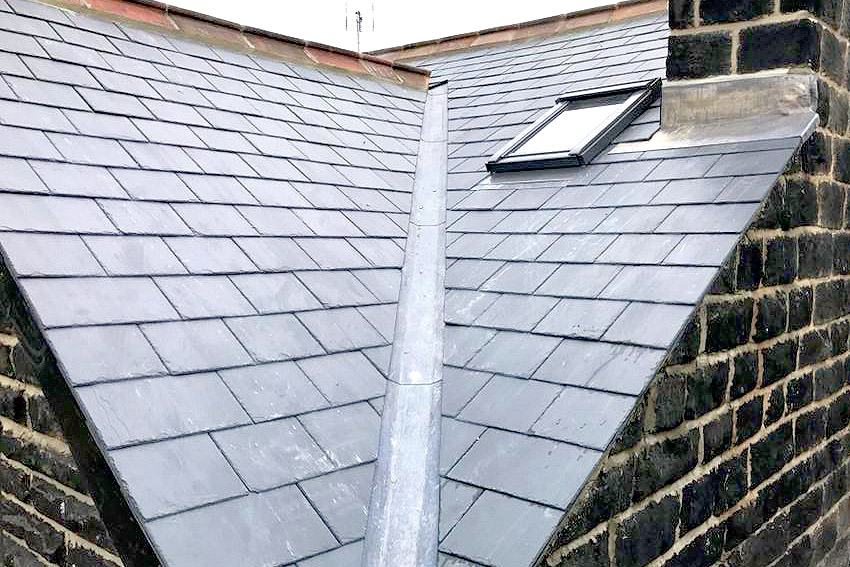
24 Oct Types of slate available for roof tiles
Contrary to popular belief, there’s more than one type of slate roof tile. Buildings erected prior to 1990 with an original roof will always have natural slate roof tiles, but more modern buildings can have artificial or bitumen slates.
Here’s what you need to know about them.
Natural slate roof tiles
By far the most popular type of slate roof tile, natural slate is mined from the earth with individual tiles cut from a larger chunk of rock. Although when looking from a distance or at ground level these tiles appear to be the same as one another, each natural slate is actually unique, so no two tiles are exactly the same.
Small imperfections in tiles give them their unique appearance which many homeowners love. Slate also weathers over time, becoming worn down over a period of ten years. A good slate roof will last for eight decades easily.
Advantages
- Long lifespan – 80 to 100 years
- Each tile is unique
- Easy to replace if broken
- No maintenance required
Disadvantages
- More expensive than artificial tiles
Artificial slates
Artificial slate roof tiles are an engineered tile, manufactured from cement and synthetic fibres. They are made in bulk to keep costs down, which means these tiles tend to cost half that of natural slate tiles. The tiles are made using a mould, with one roof using tiles from a set of moulds so no aligned tiles match. This helps mimic the appearance of a natural roof, despite 1 in 5 tiles being the same visually.
Unlike natural slate tiles, some artificial tiles are designed not to weather. This enables homeowners to maintain a smooth, new looking roof. However, artificial tiles that weather are available, and they can be very convincing.
Advantages
- 50-60% of the cost of natural slate
- Long lifespan – will last for 50 years
- Large variety of colours
- Weathered and non-weathering tiles available
Disadvantages
- Don’t last as long as natural slate
- Not authentic
Bitumen slates
Bitumen slates are an engineered tile. They come in strips and are manufactured from a fibreglass base which is coated with bitumen and aggregate. The result is a highly durable and resilient roof tile. They weigh far less than natural slate making them suited to houses with a steep pitch. The appearance of bitumen slates can mimic natural slate from ground level, but at roof height the difference is obvious.
Because bitumen slates weigh 20% of natural slate (on average) they are a safer choice for steep pitches. They are also easy to repair and replace. The appearance is uniform, unless a series of different bitumen roof tile designs are used.
Advantages
- Lightweight
- Very durable – will not crack
- Easy to repair and replace
- Decent lifespan – 25 to 40 years
Disadvantages
- Can look cheap
- Not always a suitable roofing material (bitumen roof tiles can cause condensation in attic space, causing damage to timber over time. Suitability depends on how well the attic space is ventilated. Good ventilation is essential).

Sorry, the comment form is closed at this time.